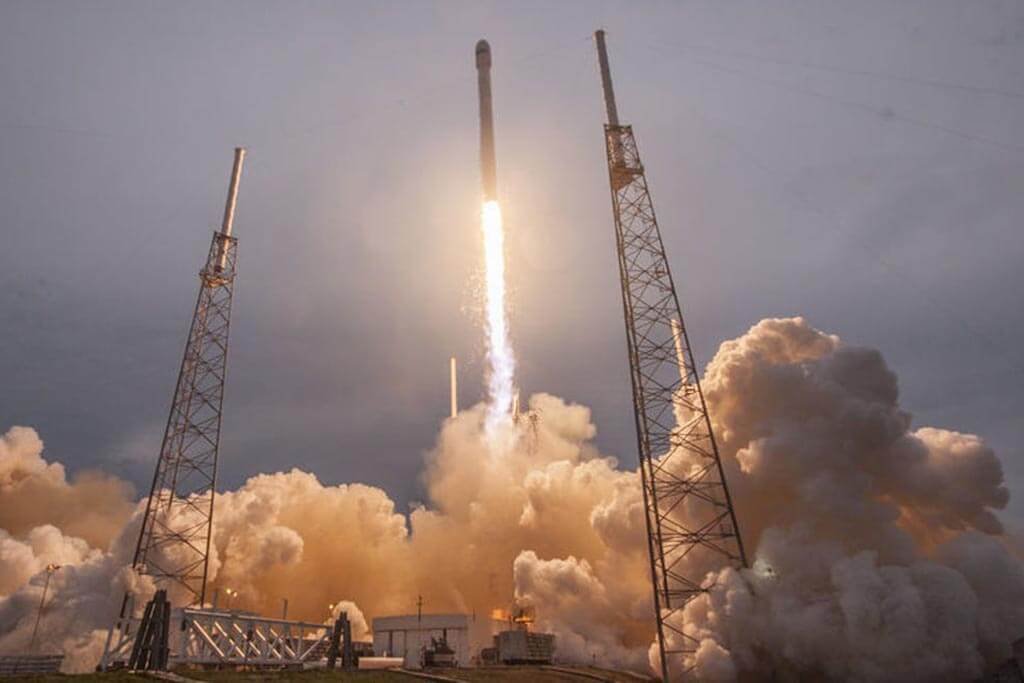SpaceX Beats Falcon 9 Recovery Records After Company’s Heaviest Launch Ever

Completed on May perhaps presumably also 30th, SpaceX’s most unique Falcon 9 booster recovery smashed plenty of internal race records, unofficially cataloged over time by watchful fans.
In temporary, as the firm’s skilled recovery technicians continue to own abilities and grow mindful of Falcon 9 Block 5, the length of booster recoveries had been continuously in the 12 months since Block 5’s start debut. Already, the effectivity of recovery processing has gotten to the point that – as soon as SpaceX optimizes Block 5’s construct for refurbishment-free reuse – there must aloof be no logistical reason the firm can’t circulate the identical booster twice in ~24-48 hours.
In step with the records accessible on r/SpaceX… the chronicle time from OCISLY being docked to a booster going horizontal is ~41 hours (Merah Putih). B1049.3 has smashed that chronicle at fully ~29 hours! https://t.co/FGhn9ghXXb
— SpaceXFleet Updates (@SpaceXFleet) May perhaps presumably also 29, 2019
The facet road to like a flash reusability
No longer frequently ever will it construct headlines, but the truth remains that SpaceX’s final aim is now notmerelyto reuse Falcon 9 (and various) boosters, but to invent so with a level of routine effectivity drawing reach that of in model passenger plane. It’s sensible to buy that chemical rockets can even in no draw reach those capabilities, but they’ll also merely certainly be in a space to bolster sufficient to radically trade the connection between folks and spaceflight.
Along that line of pondering, SpaceX CEO Elon Musk determined years ago that an fine representative aim for Falcon 9 would be to start the identical booster twice in 24 hours. In the final 365 days or so, that largely arbitrary aim has changed slightly and is now believed to be slightly wider, aiming for booster reuse within a pair of days of recovery. Here is a life like adjustment extra than a technical criticism of Falcon 9.
In customary, Falcon 9 merely doesn’t have the efficiency mandatory for routine reusability timelines measured in hours. Nearly all of SpaceX launches need sufficient of Falcon 9’s efficiency to necessitate recovery aboard one amongst SpaceX’s two drone ships, infrequently stationed a minimum of a 200-300 km (100-200 mi) offshore. That truth by myself almost single-handedly kills any probability of sub-24-hour booster reuse, on condition that the system of towing the booster-carrying drone ship support to port happens at a max race of ~10 mph (15 km/h). Correct gaining permission to enter the port itself in general entails waits of 6+ hours a pair of miles offshore.
Low orbit, low mass Falcon 9 missions are principal extra promising for extraordinarily like a flash reusability, on condition that both of SpaceX’s West and East circulate landing zones are positioned merely a pair of miles (or decrease than 1500 toes, in the case of LZ-4) from their corresponding start pads and processing amenities. On the different hand, these missions are slightly rare, while SpaceX’s have low Earth orbit (LEO) Starlink launches will likely involve payloads so heavy that long-distance drone ship recoveries will be mandatory.


Falcon 9 B1049 returns to port after its third successful start and landing in eight months.
Come what would possibly perhaps, there are Falcon Heavy launches, most of which will permit for both facet boosters to return to the Florida circulate for landings at LZ-1/LZ-2. On the different hand, these pose their have barriers to like a flash reuse, mainly as a result of the fact that facet boosters – while technically merely Falcon 9 boosters – would need most most valuable adjustments to pork up a single-stack Falcon 9 start. Falcon Heavy launches merely aren’t going to happen support-to-support over a interval of 24-48 hours, in say that option is moreover out of the question of.
This signifies that SpaceX’s fully real option for good like a flash reuse is to as an different point of interest on one thing nearer to a weekly start skill for Block 5 boosters, which implies that the identical booster would be in a space to start, land, return to shore, and put collectively for the next start in the identical week. Even then, start living readiness can even merely aloof stand in the skill of if truth be told radical enhancements in booster reuse and start frequency. After every start, SpaceX’s pads and transporter/erectors take a essential beating, requiring routine repairs and maintenance forward of returning to flight-readiness. Barring most most valuable enhancements, SpaceX has demonstrated minimum start-to-start occasions of roughly 10 days, and reducing that figure by 50-90% will be a essential project for a rocket as mighty as Falcon 9.
Falcon 9 B1049.3 returns to Port Canaveral this afternoon following the successful start of the first Starlink mission and landing atop the “Of Course I Unruffled Love You” droneship.pic.twitter.com/IJ2xRbyCPJ
— John Kraus (@johnkrausphotos)May perhaps presumably also 28, 2019
B1049 takes a step forward
No subject the many logistical reasons that Falcon 9 will likely in no draw lend itself to routine ~24-hour reusability, having that latent skill would aloof point out that the hardware is superior sufficient to present that effectivity. Even supposing SpaceX can’t actually circulate every booster at its operational skill, with regards to refurbishment-free reflights will aloof translate into dramatically decrease start funds. Original civilian plane needn’t circulate every 2nd of every single day to aloof be sensible to characteristic (with the exception of amortization funds).
Come what would possibly perhaps, SpaceX has been taking little steps in that direction ever since the firm began convalescing (and reusing) Falcon 9 boosters. Falcon 9 B1049’s third recovery has been one amongst the fully (and most chronicle-breaking) steps but, but those records were fullymerelybroken The most essential statistic to return out of the post-Starlink v0.9 recovery is that B1049.3 took decrease than 30 hours to proceed from docking in port to being horizontal on a SpaceX booster transporter. The old chronicle-holder changed into as soon as Falcon 9 B1046.2, requiring approximately 40 hours for the identical feat. B1049.3 moreover holds the chronicle for quickest recovery total – merely 48 hours from docking to being transported to a SpaceX hangar – but fully beat B1051 by about half an hour. In customary, Falcon 9 Block 5 has been privy to continuously like a flash recovery operations and B1049 is merely doubtlessly the most unique in a long line of reusable SpaceX rockets.

Falcon 9 B1049.3 returned to Port Canaveral on May perhaps presumably also 28th.

B1049.3 bares its effectively-venerable Merlin 1D engines and engine part.





